Hello! Got a batch of things to mention to you all as we get started! First off, anticipation is building in the new X-Office, and it’s becoming more and more difficult to not be talking about what we’ve got coming up. This week, we pulled together mock-up covers for our first bunch of books and they looked really great. Seriously, it’s a simple thing, but once we put the logos on there, suddenly the whole line looked like X-MEN comics. At the end of the day, you guys are going to tell us, and I have no doubt that there are going to be people who don’t like what we do—either because you were happier with the current status quo or else you simply don’t click with what we’re putting down. And that’s all right. But at this minute, I’m super-pumped for what we’re doing and I think they’re going to hit well. I’m feeling confident. But we’ll see.
Meanwhile, recognizing that I'm an intrinsically lazy and ill-motivated person, Robb Milne, Bryan Stratton, and Jamie Wenger, the crack team behind the Marvel By The Month podcast, went ahead and designed a T-Shirt based on my often-uttered slogan: COMICS: DYING SINCE 1935. Despite having coined the phrase, I’m otherwise totally unaffiliated with it—but give that they’re donating a portion of the proceeds to the Hero Initiative, I’m supportive of their effort. And you can order one of your very own at this link. (I’ve already done so.) The podcast is really fun as well, as they read through the whole of Marvel’s publishing history a month at a time, often with special guests in attendance. So if you’ve got an interest, you can check them out here.
And speaking of podcasts, I recently sat down with my old boss Bob Budiansky to talk about the history of the classic Marvel Trading Cards of the 1990s with the Dollar Bin Bandits. So if this Newsletter doesn’t give you enough content and you don’t mind staring at my bulbous head for ninety minutes, give it a listen at the link above.
Going back to me being lazy and ill-motivated, having been doing this Newsletter for the past two years, I find that whenever I need to go back through the archives to locate something I’ve talked about, it takes me forever. So what I could really use is for some industrious fan to pull together an index of what each past installment covers. This wouldn’t be a paying gig or anything, all you’d get out of it is a momentary spotlight and the knowledge that you helped in the cause of spreading culture and wisdom far and wide across the land. But we comics fans have done far more for stupider reasons, so I’m hoping that somebody will step up and surprise me with their efforts.
And finally, before we get to the Q & A portion of the afternoon, a quick trivia contest for you all. I was researching something else when I came upon this fact again and thought it would make for a good challenge. (And yes, i know we’re on the Internet where the correct answer can probably be pulled up in two seconds. I’m simply trusting you not to do that.) So here it is. Over the years, even before this current takeover of the X-Line, I’ve occasionally edited an X-title here or there. I’m not speaking here about stuff like X-MEN: THE END or the occasional one-shot. I mean issues of a legitimate part of the X-Line. So that’s my challenge: what was the first such book/issue I did this with. To be honest, I’d all but forgotten about doing it myself, so I thought it merited positing to the group. Good luck in the chase!
And now, your questions for the week:
Daniel Muli
Lately I've found that my opinions around superheroes has been changing as my five year old starts to discover Spider-Man, the Transformers and so forth, and asks me about them. I tell him some of the stories I know, fun facts and origin stories and so forth, and that's fun, but a lot of these are really old stories. It's impressive that they've held on for so long, (and it's cool to think that we'll be able to go to the movies soon together and I won't have to "check out" as he enjoys himself) but also I like there being character evolutions/new characters and takes that make more sense for the youngsters than for my generation. Such as: Teen Titans Go, Batwheels, Spidey and His Friends and the whole move towards inserting more comedy into adventure shows, which I gained an appreciation for while watching some of these shows with him.
All leading to the question: Has parenting affected your work as an editor? Maybe changing your opinions about how you approach the work? If so, how?
I’m not entirely sure that it has, Daniel, in that my kids never really showed any interest in what I do or the mountains of comics that littler my household. That was always “Dad stuff” and so their interests lay more in other directions. That said, just age and experience has a tendency to alter your opinions on this material, and I’ve mused at length in the past about what the purpose of super hero stories is and whether we’ve always served them well by making them more adult-issues-oriented and sophisticated (and violent.) One of the more popular pieces over at my Blog was dedicated to this very question, The Purpose of Super Heroes. And amazingly, having learned nothing in the five years since I wrote that piece, Zack Snyder this very week spoke about how he felt it was necessary for Batman to kill people so that he would continue to be relevant. Personally, I think that’s a bunch of self-serving crap, but he’s as entitled to his opinion as anyone. I just wish he had better reading comprehension skills concerning THE DARK KNIGHT RETURNS. (Spoilers: Batman doesn’t kill anybody anywhere in its 200 pages, though he does shoot someone.)
Scott Honig
Wait!! Are you taking over the X-Office?!
If so, that’s super exciting!!! And if not, I’m still super excited for whatever you’ve got coming!
That’s the rumor, Scott!
Paul Constant
Holy cow, I’ve got to side with Sarra on the Masterworks debate—if the splash page lands on the left, doesn’t that screw up all the page-turn reveals for the entire issue? Better to have the cover facing the splash, since the reader already bought the book and doesn’t need to be enticed to pick the issue up off the newsstand. Or am I missing something?
When you’re republishing old work in new formats like this, what kind of effort goes into preserving the original facing-page transitions versus page-turn reveals?
Well, Paul, back in the 1960s, when most of those stories were being produced, nobody was really thinking all that much about the page-turns. In those days, most often scenes simply changed mid-page as needed. And the creators could seldom be certain where ad pages were going to fall. So there’s really no effort made to reproduce that story flow in reprints apart from facsimile editions that also reproduce the original ads and text pages and such.
Stuart Perks
In England we had a TV show called Room 101 where to quote Wikipedia "celebrities are invited to discuss their pet hates and persuade the host to consign those hates to oblivion in Room 101, a location whose name was inspired by the torture room in George Orwell's 1949 novel" . What is the one thing you personally would like to banish from the comic industry to make it a better place ?
Comicsgate.
Jeff Metzner
Priest has written extensively about his "Captain America and the Falcon" experience at his old website here:
Looking over what’s at that link, Jeff, it looks to me like Priest wrote it shortly after this had all transpired, which means that his reactions are fresh and the wounds still new. Which isn’t to say that he wouldn’t agree today, but just by way of giving context. His recounting of stories of working on comics past are always worth a read.
Ben Morse
About a decade ago, you and filmed hours and hours of footage for the Fantastic Four’s 50th anniversary and it was great stuff thanks to your insight and expertise. However, those videos never aired, and it’s one of the biggest regrets of my professional life. If anybody at Marvel still has access to those files, hopefully someday they get discovered. Sorry Tom! And thanks for the content!
Look, Ben, I don’t really think you have anything to apologize for here. You weren’t the one who made the decision to pull the plug on that project after we’d done all of that extensive filming. So don’t worry about it. I mean, it’s not like you borrowed my home-burned copy of Mark Gruenwald’s greatest video hits and then never returned it to me before you left staff like some other folks I could mention. So we’re good.
Paul
“But putting out four comic books in a single day: that’s incredible.” It is incredible but is it his most in a single day?
It definitely isn’t, Paul. I’d have to do some deep research to determine for certain what was, but my guess would be July 2, 1963, the date on which AVENGERS #1, X-MEN #1, SGT FURY AND HIS HOWLING COMMANDOS #3 and FANTASTIC FOUR ANNUAL #1 all hit the stands. That’s still only four releases (“only” four!) but that oversized Annual makes it represent a bunch more pages. Kirby was a titan.
Evan “Cool Guy”
Your last couple sentences seem a bit ominous! Do you foresee discontinuing the newsletter in the near future?
There’s always that possibility, Evan, if we get to the point where the commitment gets to be too much. But for the moment, I seem to be doing fine.
Sean Stoltey
Any insight into why the changes were allowed from Byrne's Spidey? Was it really a "this is great!" attitude, or more of a "he did such amazing work rebooting Superman that we're just going to get out of his way." Always been curious about this because I bought Chapter One because of the art, not the story. Which is a rarity for me. And Byrne's Superman is my Superman. Maybe second to, but probably tied with the Donner/Reeve version. (First two movies only, please. ;)
Well, Sean, John pitched doing SPIDER-MAN: CHAPTER ONE and the approval of the project was all the permission that anybody would have needed. And that series was being edited by Ralph Macchio, a long-tenured Marvel editor who knew that material backwards and forwards. So i expect that the feeling was that, if Ralph thought the changes were okay, then they would probably be okay.
Jeff Ryan
Was there a bean-spillage moment from the past where you told one seemingly trustworthy person a bit of future Marvel plans, and then saw those plans broadcast all over the place?
Just look at any Bleeding Cool column, Jeff. Leaks like that happen all the time, often not even intentionally, but because somebody was too forthcoming with somebody who was too forthcoming with somebody else, all the way to Rich Johnston’s ears.
Callie
How does someone become a comic writer for marvel or another big company? I hear so many stories about how artists break into the field, and see things like the Stormbreakers initiative but I never hear anything about how writers get into it, other than a few who I see making indie comics and then are specifically reached out to, or ones like Neil Gaiman who were already established authors before they started on comics
A couple of points on this, Callie. First off, if you’re going to attempt to do this, your goal needs to be becoming a writer, not just a Marvel writer. Writing for Marvel can be A goal, but not the only one. And that’s because the only way to get hired to write for Marvel (or for DC, I assume) is to have proven that you have the necessary skills somewhere else first. Marvel and DC are the major leagues, and just as no player plays their first game for a major league team, no creator writes their first published story for Marvel. We only take the best. So where do you start? Absolutely anywhere that you can get into print and hone your craft. And it’s easier to do that now than ever before, given the Internet. So you can produce material for smaller companies, or so comics online, even if they’re just on a small website that gets only a relatively few numbers of views (kind of like this Newsletter!) Or really any other way you can come up with. You can also ply your trade in other related fields, writing prose or screenplays or whatever. Anything that a Marvel editor could potentially read and see some promise in, and thereafter reach out to you about some upcoming project that they’re attempting to cast. To give you a concrete example of such a thing, Murewa Ayodele and Dotun Akande sent me, unsolicited, a link to their vertical web comic My Grandfather Was A God. I read it and liked it, and so reached out to them about doing a story for the MOON KNIGHT: BLACK, WHITE & BLOOD anthology I was putting together. And from there, they started to pick up other assignments at Marvel, including last year’s I AM IRON MAN limited series. But they had to do their earlier work first in order to get onto my radar in a meaningful way. Good luck with it!
Leigh Hunt
I know you said recently that editor's names shouldn't be in the credits but you might like to know that having been uninterested with the X-line for a while now, I will be trying out the X-books again when your reign starts simply because I feel, in general, the comics you like are the comics I like so I'm going to give it a go. Not sure if the X-Men will ever again be in a place where I can love them again but your name and the love and effort I know you will bring to the project has me interested at least which A. N. Other editor would not have done.
Well, that’s very nice of you to say, Leigh! By that same token, the odds are decent that you may wind up liking the X-Titles edited by Mark Basso or Darren Shan or Annalise Bissa or Martin Biro more than the ones I direct myself. And that’s perfectly fine, too. Hope you like them—let us know!
LA
I purchased the Avengers #11 Mark Brooks Headshot covers of the Black Knight. I was just wondering if the cover sells well of a particular character, would that character be given a chance to appear somewhere as opposed to if it does not sell well? Does it matter at all?
It certainly matters, LA, but it would have to be a marked rise in interest all across the country and the world. In other words, if you were so dedicated to the Black Knight that you decided to order 10,000 copies of that issue to try to convince Marvel to start up a new BLACK KNIGHT series, that probably wouldn’t work, since all of those orders would have come from one geographic location and not be reflected across the whole of our audience.
Sergio Flores
I have a question about a DC comic and thought you might know the answer. I’m re-reading Superman: Secret Identity by Kurt Busiek and Stuart Immonen and wondering if the Superman comic book panels that are used throughout the book are pulled from actual old Golden/Silver Age issues. This is probably my 5th or 6th time reading the book, and I think I’ve always just assumed they were pulled from older comics, but I’m wondering if Stuart Immonen drew them himself, mimicking the styles of those older artists (like Curt Swan), with Kurt Busiek providing new dialogue.
You know, Sergio, this isn’t really my area of expertise. Fortunately, if I get this wrong, it’s likely that Kurt Busiek will show up in my wake with a correction. Him, you can believe. But my memory of it is that those panels were the work of the infinitely-adaptable Stuart Immonen. In certain cases, Stuart may have been recreating panels or images from older Superman stories, but I believe they were all drawn by his hand here, rather than clipped and pasted. Let’s see what Kurt has to say once he arrives.
Behind the Curtain
What you see below is the Marvel Bullpen Bulletins page from March, 1994, announcing my promotion to full Editor. It was also the one and only time I appeared in Rick Parker’s assorted comics about life in the Bullpen. His likeness of me was pretty good.
.Oh, and that checklist? That was one week’s worth of releases back then.
Pimp My Wednesday
Comin’ at ya!
Issue #4 of AVENGERS TWILIGHT accelerates things as we rush towards an explosive climax. The reaction to this long-gestating series has been wonderful to see, with the first three issues going back for second and even third printings. No doubt this is due to all of the love and care that Chip Zdarsky and Daniel Acuna invested into their work. This time out, Thor joins the struggle—so don’t miss out!
And we’re also nearing the end of the long-running story in AVENGERS UNITED, with issue #23 (out of 25) dropping this week. Derek Landy and Marcio Fiorito have come a long way since this adventure began several months ago, but one of the wonderful things about this format is the fact that all 22 previous chapters are still there, ready to be binged all at once. So it’s not to late to get on board before we get to the explosive ending in just two more weeks!
A Comic Book On Sale 25 Years Ago Today, March 10, 1999
THE AUTHORITY by Warren Ellis and Bryan Hitch was probably the most influential super hero comic book of the early 2000s, even though it first started coming out in 1999. It was an outgrowth of work that both creators had done previously on STORMWATCH, a title that Ellis had taken over with its 38th issue. That series was about a worldwide crisis response team, but Ellis had a ton of established backstory that he had to grapple with, and so eventually he made the decision to wipe out most of those characters in a WILDC.A.T.S/ALIENS crossover and start fresh. In its place, Ellis and Hitch built essentially their own version of DC’s Justice League—not complete analogues, but characters who filled the same general archetypes. But where the JLA ostensibly fought for America, and the world beyond that, the Authority were answerable to no one other than their own sense of morality. Having determined that politics and an elaborate economic machine prevented any lasting change to the world order from taking place, the Authority kicked over the board, very plainly declaring that they were going to stamp our oppression wherever they found it, no matter whose boot they might be smashing along the way. It was Fascism as Anarchism, and it proved to be very appealing, a strong influence on just about every team concept that followed. The Authority were the good guys mostly because the people they fought were far worse, absolute monsters or Lovecraftian alien intelligences that simply couldn’t be reasoned with. Ellis developed a rigid structure for the series—every story was four issues in length and told in a “widescreen” forma that allowed for Hitch’s expansive and detail-laden visuals to have maximum appeal. It was a popcorn comic book for all that, but one with some intelligence behind it, and it codified the sort of uncompromising tough guy ethos that had been kicking around since at least WATCHMEN’s Rorschach as the 21st Century’s take on what made for a compelling modern day super hero. Ellis and Hitch only did twelve issues in total, three stories, before handing over production to Mark Millar and Frank Quitely, who went even broader on the sarcastic violence and hedonism. These are still great comics today, and they still hold up—even if a lot of the work that they inspired feels a bit dated and simplistic so long after the fact. Good stuff.
A Comic I Worked On That Came Out On This Date
The official movie adaptation of CAPTAIN AMERICA came out on March 10, 1992—even though the long-gestating film that it was based on didn’t. That movie, a low budget affair of the sort that were common in that period, got some small theater play before quietly being released on home video and on cable television. It was more akin to a TV movie, really, and it sank without making much of a ripple, remembered for the fact that it made the Red Skull an Italian and that the ears on Captain America’s cowl were not real, but plastic stick-ons. But of course, if there was going to be a CAPTAIN AMERICA movie, then Marvel was going to produce an adaptation of said film. The work on it was completed well before this 1992 release, when it was decided that Marvel might as well recoup the costs of production. As was typically the case, it was built such that it could be released in multiple formats: as a movie magazine all at once, or as two issues of a standard sized Marvel comic. For this printing, it was a one-and-done. The big draw for me in working on this project was that the book was being written and adapted by Stan Lee, so this was my first time working alongside Stan in a creative capacity. My boss and the lead editor on the project, Bob Budiansky, was also respectful and deferential to Stan, which made things awkward on occasion when Bob would want some manner of correction or adjustment made, but he could only bring himself to approach Stan with it gingerly. Artwork was provided by Bob Hall, a graduate of John Buscema’s comic book illustration class who also had a separate career on Broadway, and Tom Morgan, once one of “Romita’s Raiders” who did corrections in-house and who had gone on to establish himself as a reliable artist in his own right. I don’t think I’ve looked at this book in three decades, but my memory is that it was better than the movie, largely because our team wasn’t limited by budgets or sets or locations. But the problems with the film are still present in this adaptation. The Red Skull is still Italian—but Captain America’s ears, at least, are real.
Another Comic I Worked On That Came Out On This Date
This first issue of AVENGERS/THUNDERBOLTS was something of a righting of a wrong, of sorts. Not long before, Marvel President Bill Jemas had taken THUNDERBOLTS away from me, passing it onto another editor as he had designs towards overhauling the title. He threw out literally everything but the name, recasting the series as a story about an underground fight club and focusing on Daniel Axum, the Battler, a small-time super villain who becomes a sensation on the circuit. The covers almost all featured scantily clad women and were covered with macho blurbs—it was intended to be a comic book for “real men”. But despite some very solid work from John Arcudi and Francesco Velasco, it failed to find an audience, and was cancelled after six issues. The fans of the series that THUNDERBOLTS had been didn’t want any part of it, and the book didn’t attract enough new readers to survive. probably, it would have done better if released under a different title. But at any rate, once Bill was sidelined out of his Publisher responsibilities, Joe Quesada came to me and told me that I could restart THUNDERBOLTS in the classic style again if I wanted to. T-BOLTS was never a top seller, but it had the most stable readership in the line. I figured that, rather than starting up with a new #1 out of nowhere, we needed to prime the pump once again and get lapsed fans to come back to the series. Accordingly, I convinced Kurt Busiek to return and to co-plot this six-part limited series with Fabian Nicieza, who had written the book after Kurt’s departure all the way up to the point where Jemas overhauled it. And we used the appeal and strength of the Avengers to help set things off on the right foot. (I also viewed these six issues in some respect as the “replacement” issues of the series that had gone out as THUNDERBOLTS #76-81.) From there, we’d launch NEW THUNDERBOLTS, and the book would continue to rock on for another hundred issues. But there was one more problem that came up as we got things under way. The artist I hired to draw AVENGERS/THUNDERBOLTS was Barry Kitson. But an issue and a half in, Kitson called me up and told me that he’d been offered a hefty contract by DC to drawn LEGION OF SUPER HEROES. The catch was that he had to begin on it immediately, and Dan Didio made it clear that the deal he was offering would only be good if he left Marvel in the lurch and made the switch immediately. We told Kitson to go, that the opportunity was simply too good. But realizing that Dan had done this thanks to Mike Wieringo being true to his word to me and remaining on the FANTASTIC FOUR issues he’d agreed to do before switching over to DC for LEGION, the whole thing got my back up. I spent the next couple of months actively sniping DC’s talent pool in retaliation—grabbing up Tom Grummett to replace Kitson on AVENGERS/THUNDERBOLTS, grabbing Mike McKone to do FANTASTIC FOUR with JMS, and so forth. Any time there was an open assignment, my mind immediately went to which DC contributor could I fill it with. I don’t know whether Dan ever realized what I was doing or not, and in a couple of months, my anger subsided and I went back to business as usual. But that’s the business, sweetheart. And in my defense—he started it. This first issue came out on March 10, 2004.
Yet Another Comic I Worked On That Came Out On This Date
March 10, 2004 was a busy day for launches out of my office. We started up a quartet of titles that day, only three of which I’m going to speak about here. And this one, IRON FIST, was the one that really didn’t work at all. I’ve related in the past about how Marvel’s title count had dropped dangerously low as Bill Jemas kept cancelling titles he didn’t like without replacing them, and so there was a pressing need to get a lot of new books up and running ASAP. Additionally during this period, having grown frustrated with a lot of Marvel’s writing talent, Bill was looking to bring in a lot of new writers recruited from outside of the normal channels. Writers whom he could teach to think and write the way he wanted. I was a longtime reader of the men’s paperback series THE DESTROYER, the Remo Williams books, and at this moment a new ghost writer, Jim Mullaney, had taken over the series. Based on a number of his books, he struck me as having the right sensibility for comics—he was sort of like the Roy Thomas of THE DESTROYER, threading together portions of the mythology in interesting ways and remembering characters and bits of business from the past and using them to create texture in the new work. So when there was a desire to do an IRON FIST launch as a part of this new expansion effort, I thought of him and jumped in for the assignment. Jim was a very nice, very professional writer and he did a decent job. But somehow, the spark that was in those Remo books simply wasn’t present here. It could simply be that he was more simpatico with that material. so this IRON FIST run isn’t bad so much as it’s just kind of there. It runs the bases, but no more. Kevin Lau contributed some nice visuals to the series. So I don’t think of this book as a failure so much as a disappointment. I wasn’t able to tap into whatever it was that made Mullaney so effective in prose.
And Yet Another Comic I Worked On That Came Out On This Date
SHE-HULK #1 likewise came out on March 10, 2004 and was the first ongoing super hero series for Marvel written by Dan Slott, the one that really put him on the map. I had known Dan for more than a dozen years at this point, and respected his talent. I’d even given him a few assorted back-up stories to write for me over the years. he was spending a lot of time during this era writing licensed comics after the popularity of his REN AND STIMPY work got a bunch of notice. But he really wanted to do super heroes, and yet he could never get anybody to take him seriously in that arena. I could have opened that door for him at any time, potentially, but I had my own bugaboo. I had never liked the sort of nepotism that was prevalent all through Marvel when I arrived there, where editors gave one another writing assignments based on their personal friendships and relationships. For all that I had benefitted from that same arrangement at certain points, I didn’t like the message that it sent. And I didn’t want to be seen as an editor who would behave that way. And so I constantly told Dan throughout all of those years that I could not, would not hire him for an ongoing super hero series until he’d gotten one elsewhere under his own efforts. This stymied him for years, but he put in the work, grinding away at the problem and climbing that hill no matter how many times he was knocked back down. And then, after a decade of trying, he convinced Dan Raspler to let him do an ARKHAM ASYLUM limited series that Ryan Sook illustrated. That book was something of a surprise hit, a hidden gem—but it was good enough to inspire Mike Marts to reach out to Dan about writing a project in his X-Office. Once that happened, once a Marvel editor had moved to hire Dan without any involvement from me, I figured that he was fair game, and I spoke with him about doing SHE-HULK. His enthusiasm was massive, he realized that at last this was his opportunity to shine and to break through, and so he hit the book with everything he had. His pitch was great, keeping a lot of the irreverence of the John Byrne incarnation of the character but setting her up in a new status quo that emphasized her as Jen Walters, Lawyer as much as the gamma-powered amazon. I paired him up with Juan Bobillo, a quirky and individualistic artist who had done a Kitty Pryde-centered limited series with Chris Claremont, and who brought a certain European sensibility to his pages. He also regularly drove Dan nuts with his idiosyncratic approach to established Marvel characters and his sense of humor, but I maintain that the Bobillo-drawn issues of this run are the best of the lot, even if Dan had to work harder and be cleverer to get his points across when balanced against Bobillo’s visuals. Lovely covers by Adi Granov topped off the package
The Deathlok Chronicles
Once again this time out, we begin with some additions and observations from DEATHLOK writer Gregory Wright:
Gregory Wright
I'm thrilled that you put a nice spotlight on Sarra. I found her to be wonderful to work with in your office and when she moved onto another office. MECHADOOM....oh my. I can still remember Mike Manley and I discussing him...we could not figure out what Denys was going for because it kept changing...was it a floating mass, or a robot or what? Sometime it looked really cool, and other times...I think it was a tough visual concept to pull off. But man oh man the conversations Mike and I had...lol. It was really very strange to color these stories that I didn't help write...and listen to Dwayne complain about various aspects of it that he wasn't allowed to do because other offices didn't want him using their characters in a specific way. I CAN share that he never complained to me about YOU. That's pretty big.
That’s definitely nice to hear, Greg, although I’m sure that Dwayne must have had something to complain about in regards to me at some point during this whole process.
In any event, DEATHLOK #5 was the conclusion to the four-part “Souls of Cyber-Folk” storyline, and it was where the story went right off the rails to crash and burn. As Greg indicated above, because we were borrowing characters from other editorial offices for this finale, including the Fantastic Four and the X-Men, the editors of those series had a say over how their characters were depicted, and that led to a bunch of problems and adjustments. Among the ones I remember, there’s a point in the denouement of this story where Mechadoom has been defeated and the heroes need to decide just what to do with him. And Dwayne wanted the X-Men in the person of Wolverine to express that they needed to kill him, that otherwise he would just go back to what he was doing and everybody would be at risk again. But Bob Harras wouldn’t let us do this—he was attempting to pull back on the X-Men being fine with killing people as they’d become during the Mutant Massacre and afterwards. But this meant that we didn’t have anybody among the good guys who could express that point of view plausibly (not that we were ever going to have any of the heroes act on it.) Additionally, Bob Budiansky, my boss, had his own problems with how the story wrapped up. I forget all of the details now, especially since Dwayne attempted to revise the script to make everybody happy with it multiple times (I seem to think he did five drafts here) before finally ending up with the muddled mess that this climax becomes. I wasn’t yet seasoned enough to be effective arguing back against these more experienced editors, so we probably lost a couple of battles that we should have won, and made some compromises that we shouldn’t have had to make.
But what I really want to talk about regarding this issue is the cover, which you see above. It’s a nice piece, but I wound up doing extensive revision work to it before it went to print. You see, in the pencils, Deathlok himself was smaller, about the size of Misty and Wolverine. And as such, he didn’t look like the star of the book. So I had John Romita and his Raiders stat the figure and increase his size. I also asked them to do something to fix Wolverine’s face. when it had been penciled by Denys Cowan, he was influenced by the depiction of the character done in HAVOK & WOLVERINE: MELTDOWN by Jon J. Muth and Kent Williams, and so drew him in that fashion. And he didn’t really look like Wolverine. The effect got even worse after the cover was inked by Mike Manley. I don’t know that I spoke to Mike about it, but I somehow expected that he’d help to bring Logan more on model. It was typical in this period for an editor to ask John and his guys to fix anything that was off anout any piece of art. The culture at Marvel was very concerned at that time with consistency and making sure all of the costume lines were right. Unfortunately, in my opinion, John went too far in this case. He wound up penciling and inking an entirely new Wolverine head on Denys’ body, to the point where the character looks as though he’s wearing a rubber John Romita mask. But now I was stuck. I didn’t feel that I could ask John to change it again, and I had no idea how to even get it back to being closer to Denys’ original version. So this was the version that saw print. And the worst thing about all of this, the thing that makes it all unforgivable, is that I never spoke to Denys directly about any of these alterations. I expect that I didn’t want the drama or the fight—I still found Denys to be imposing. But it’s a hell of a bunch of disrespect to show the artist, and I’m chagrined by my behavior today. What a chowderhead I was. I also suspect that this contributed to what happened with the next two covers. But we’ll cover that in the weeks to come.
Super Heroes On Screen
THE ROCKETEER was a 1991 film based on the character created less than a decade earlier by extraordinary illustrator Dave Stevens. Created to fill five pages in the back of an early issue of STARSLAYER, Stevens’ creation became an immediate hit due to his precision artwork and engaging storyline. The Rocketeer was a deliberate throwback to the heroes of Stevens’ youth, such as Commander Cody who fought his way through a dozen serial chapters clad in an experimental rocket suit. it was an unlikely success, but Stevens quickly optioned the film rights. His day job was storyboarding, so he already had connections in Hollywood. The development process of the film was a bit fraught, with several changes of direction and atmosphere along the way. In all likelihood, it was the huge success of the 1989 BATMAN film that got it finally green lit. Intended to be a more adult picture released through the Touchstone imprint, THE ROCKETEER was eventually released as a straight-up Disney film. Which meant that a number of the seedier portions of Stevens’ original storyline had to be softened considerably. THE ROCKETEER focuses on Cliff Secord, a down-on-his-luck barnstorming pilot who dreams of hitting the big time and being able to wed his high society-minded girlfriend Betty. Cliff gets his chance when he accidentally winds up in possession of a prototype rocket engine stolen by Nazi saboteurs. Strapping the thing to his back, Secord becomes the Rocketeer, his grease monkey inventor friend Peevy having worked out how to use it. The comic is paced like a serial, with cliffhanger endings and derring-do set against a 1930s period backdrop. In the comics, while it’s never stated outright, the inventor of the rocket pack is Doc Savage, the start of pulp magazine adventures during that time. Two of Doc’s operatives, Monk and Ham, are characters throughout the storyline, though they too are never concretely identified. And Cliff’s girlfriend Betty is almost literally Betty Page, a pin-up model from the 1940s that Stevens had a mild obsession with. (He eventually tracked down the still-living Betty Page and made sure that she got a fair share of the cash he’d made on the Rocketeer.) For the movie, Doc was replaced with inventor and aviator Howard Hughes, and Betty becomes Jenny Blake, a would-be actress. Probably the word that best describes THE ROCKETEER film is earnestness. It’s a wholesome production of the sort that simply is not made any longer, carrying an aesthetic somewhat akin to a Pixar film. The movie wanted to be seen as similar to Indiana Jones, but it simply lacks the edge that Indy and his world has. All that said, it’s a marvelously entertaining production. Well-written, well-performed, with a great score. Director Joe Johnson would go on to use a lot of what he learned here on CAPTAIN AMERICA: THE FIRST AVENGER. Billy Campbell makes for a likeable Cliff Secord, albeit a bit less seedy than his comic book counterpart. The same can be said of Alan Arkin’s Peevy, who is more overtly a father figure here. And Jennifer Connelly is in fine form as Jenny (I’ve got a strange Jennifer Connelly Marvel anecdote, but this isn’t really the place for it. Remind me.) , while Timothy Dalton gives a wonderfully scenery-chewing performance as actor and Nazi spy Neville Sinclair, basically an evil Errol Flynn. The effects show their age at this point (and a couple of them were pretty dodgy even at the time) but the production is so delightful that it really doesn’t much matter. I was a huge fan of this movie when it was first released. I saw it for the first time with a crowd of comic book professionals who were all in Manhattan for a convention. Everybody came out of the theater expecting it to be a big hit. Unfortunately, that isn’t the way things went, and the film was a bit of a bomb. Didn’t stop me from seeing it five times during its initial run. And once it went to home video and cable, it found its audience. As usual, you can see the trailer for the film here.
Monofocus
After having watched the anime several years ago, this past week I’ve started reading though the original manga ZIPANG by cartoonist Kaiji Kawaguchi, and it’s excellent. It’s king of like an inverse version of the film THE FINAL COUNTDOWN in which the aircraft carrier U.S.S. Nimitz finds itself back in time on the eve of the Pearl harbor bombing. In ZIPANG, it’s the Japanese Aegis Destroyer Mirai that makes a similar journey, finding itself mysteriously in the Pacific Theater in 1942, where it has to decide whether and how much it should interfere in the events of history that its crew knows are about to transpire. But the real tension in the strip is the contrast between the beliefs and values and attitudes of the modern day Japanese sailors and those of their World War II counterparts. Upon arriving, the Mirai’s XO Yosuke Kadomatsu winds up changing the course of history when he rescues a drowning officer in a downed plane. This man, Takumi Kusaka, is brought aboard the Mirai, where he learns of the outcome of the war and the future path that awaits Japan. Seeing an opportunity to bring about a new and better future for his nation, which he called Zipang. And because an influential man is alive in the world who is supposed to be dead, history begins to change, preventing the Mirai from returning to the world they left. Kadomatsu spends most of the storyline alternating between attempting to use the future technology of the Mirai to save lives and pursuing Kusaka in order to prevent his ambitions to warp the future. Along the way, Kadomatsu’s eight-year-old father is run down, meaning that Kadomatsu will now never be born—he is a man untethered from time. ZIPANG ran for 43 volumes between 2000 and 2009 when it finished, and unfortunately, only 13 volumes have ever been translated into English. So I had to source the rest of the series from its French printings and am having to translate each chapter on the fly as I go. So it’s not always the most comfortable way to read a manga, but the juice is worth the squeeze. The anime only covered the first eight or nine volumes of material, so I’m already in virgin territory as far as the story goes.
I also read Scott Kurtz’s new kid lit graphic novel TABLE TITANS CLUB today, and found it to be as delightful and rewarding as his long-running web comic PvP. Scott is one of the nicest folks in the industry, and he was able to carve out a niche for himself and his work through trial and error and simply hard work. TABLE TITANS CLUB is about Valeria Winters, a rambunctious girl who winds up joining her new school’s Dungeons & Dragons club after transferring there. Kurtz’s cartooning remains simple and effective, with emphasis on body language and subtle facial expressions, and his character work throughout the book is very engaging. It was a thick volume but a fast read, and I enjoyed it quite a great deal. I also somehow wound up with two copies, an occasional happenstance when I order things well in advance and then forget that I’ve already ordered them.
Posted at TomBrevoort.com
Yesterday, I wrote about the time that Batman fought Thor.
And five years ago, I wrote about the Five Best Comic Books of 1981.
As has been reported in a few places, mid-week I’m flying out to Austin, Texas to take part in a Marvel panel at the SXSW Expo on Thursday. But I ought to be back in time to avoid any disruption of our regular service here. If you happen to be in the area, stop by and say hello. And for everybody else, see you all in a week!
Hat’s All, Folks!
Tom B

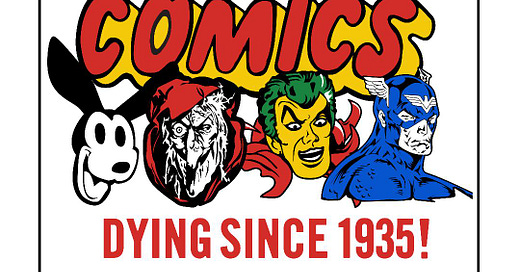



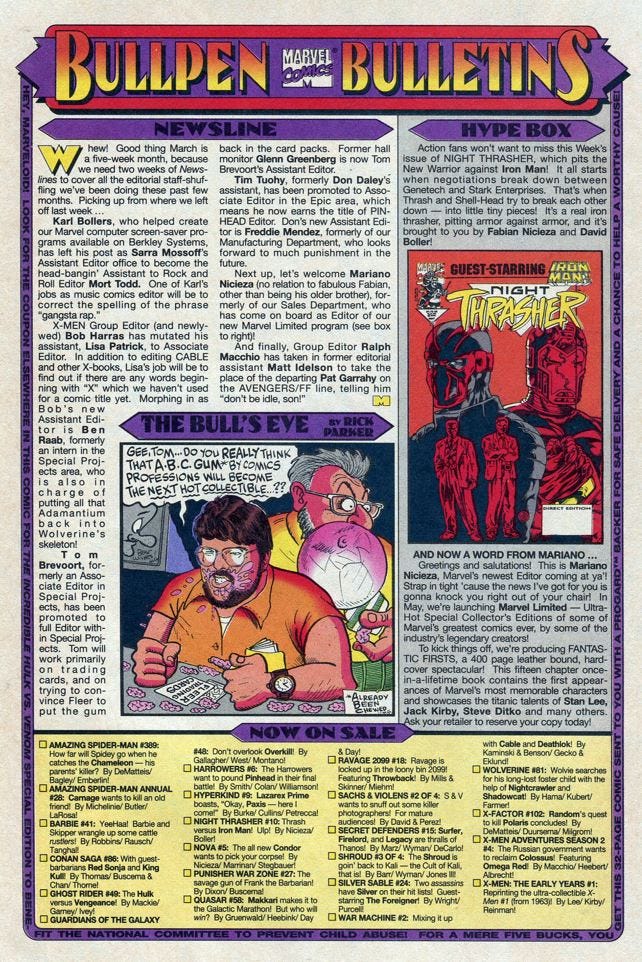
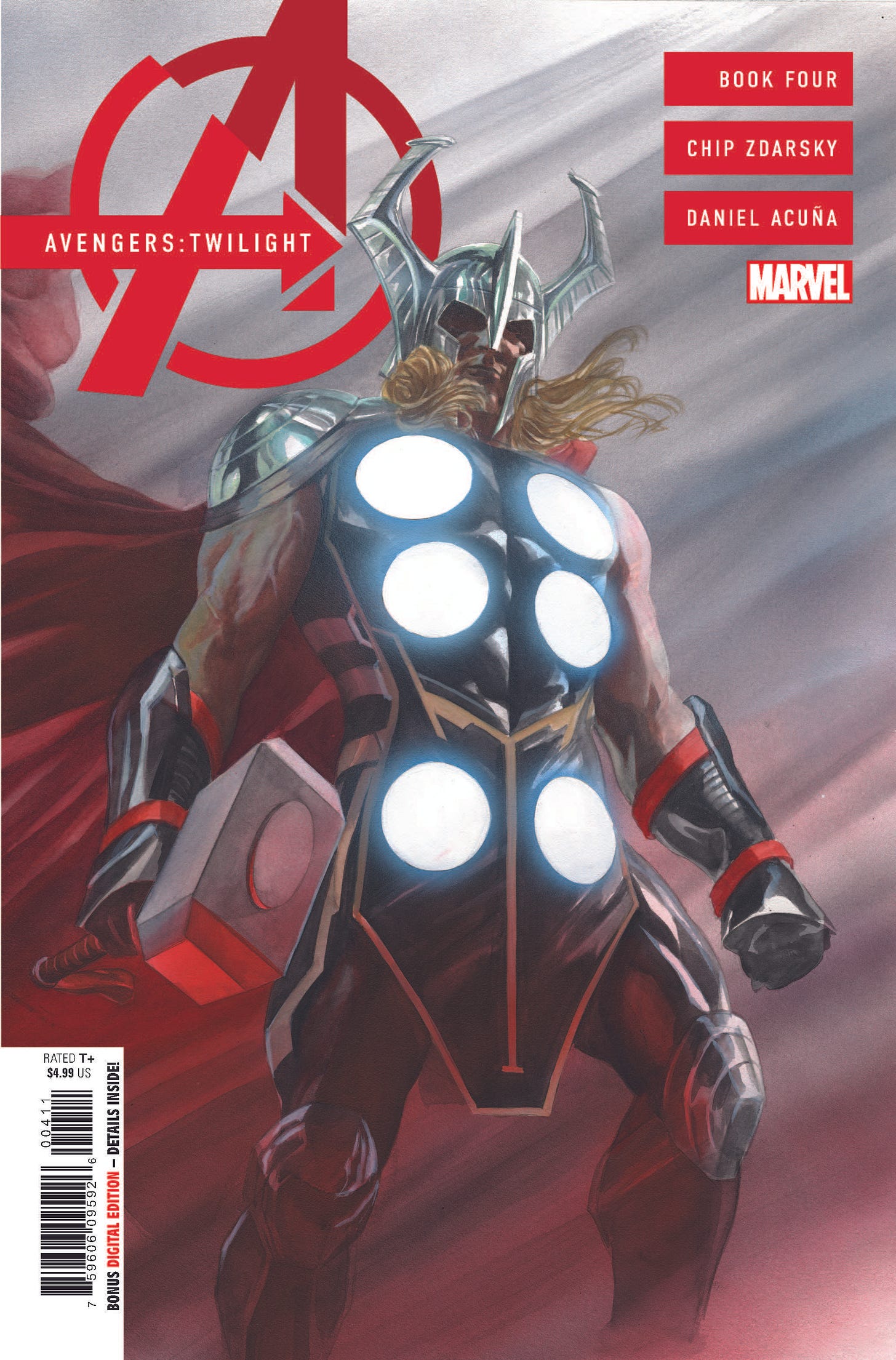
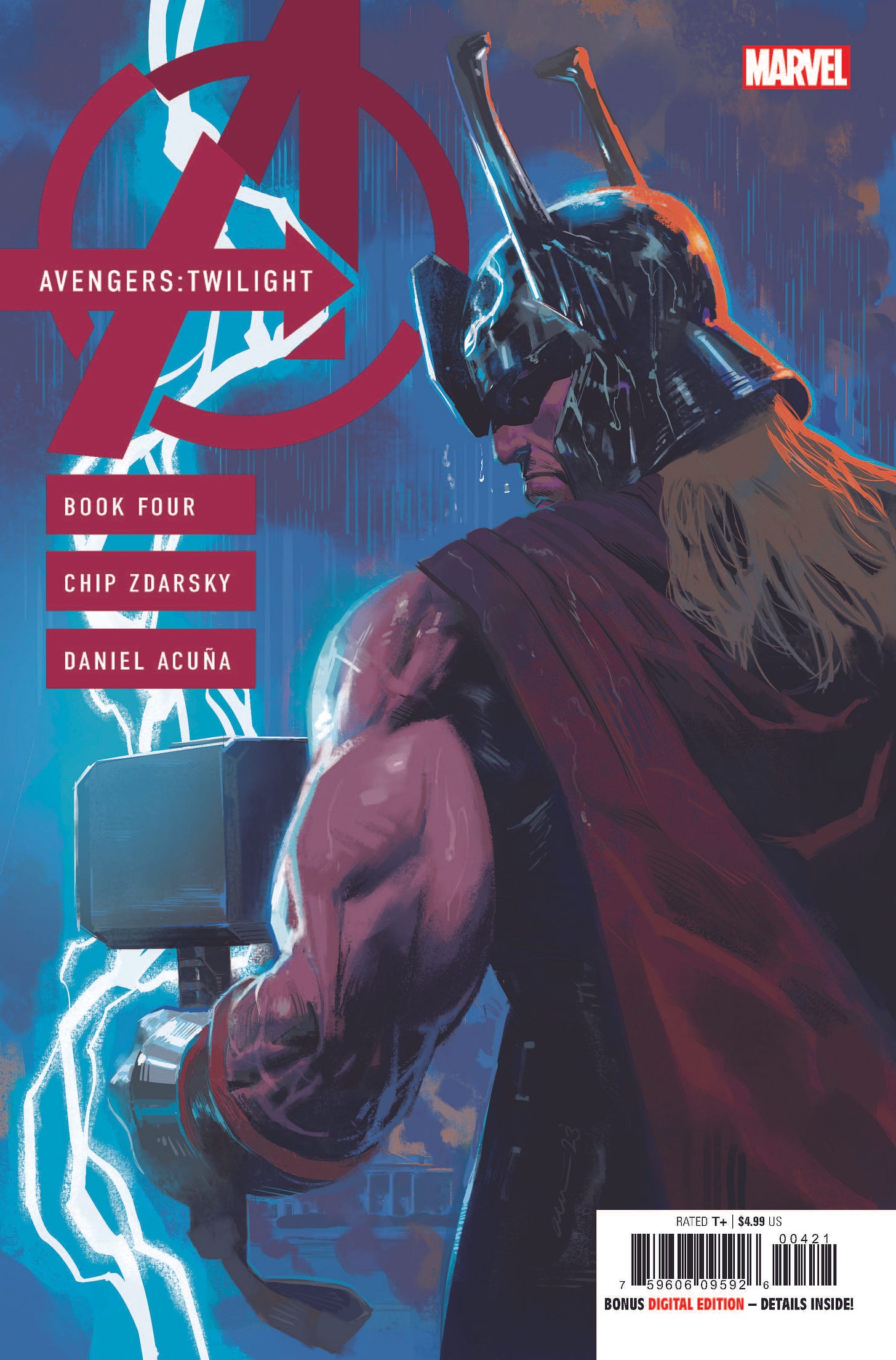
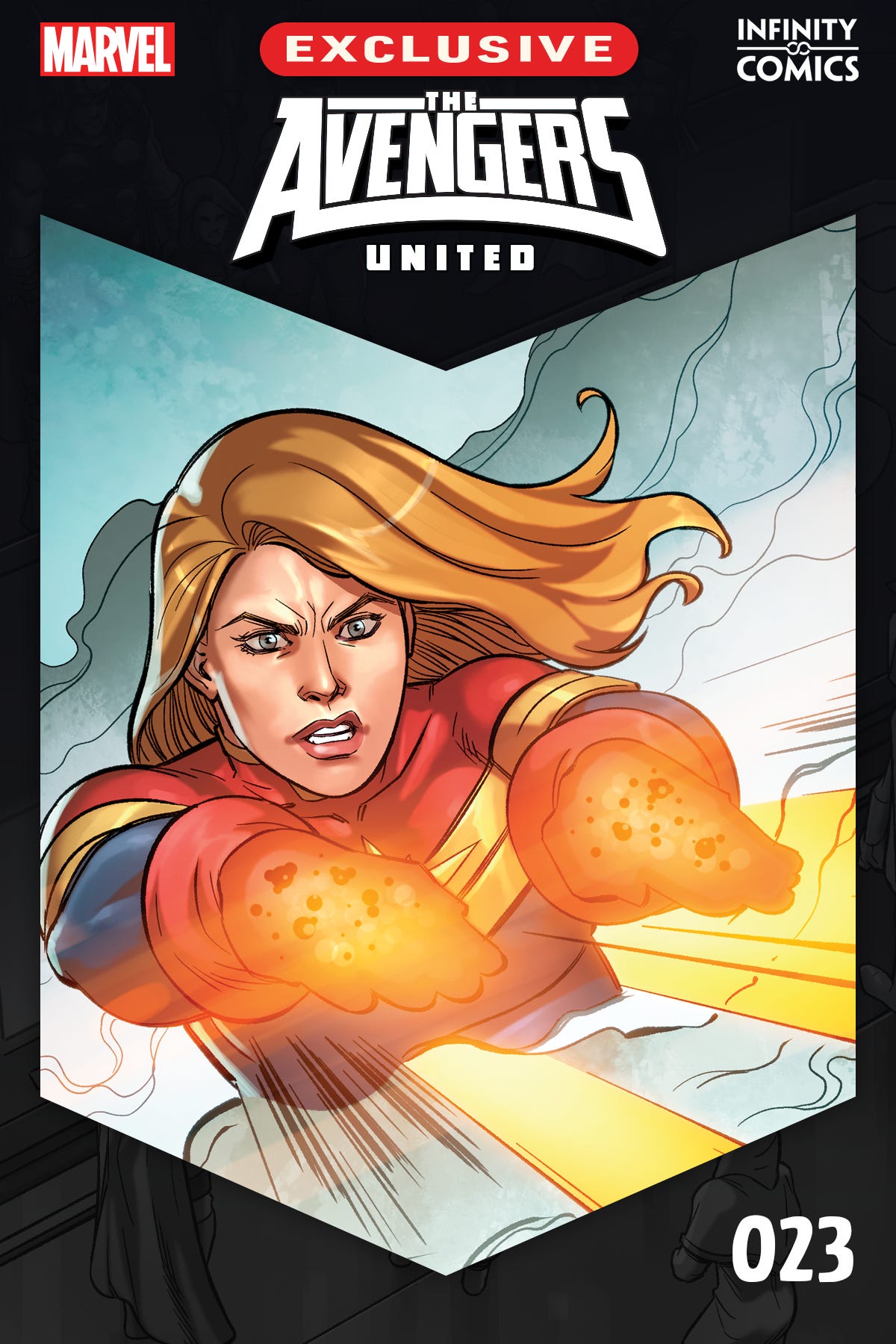
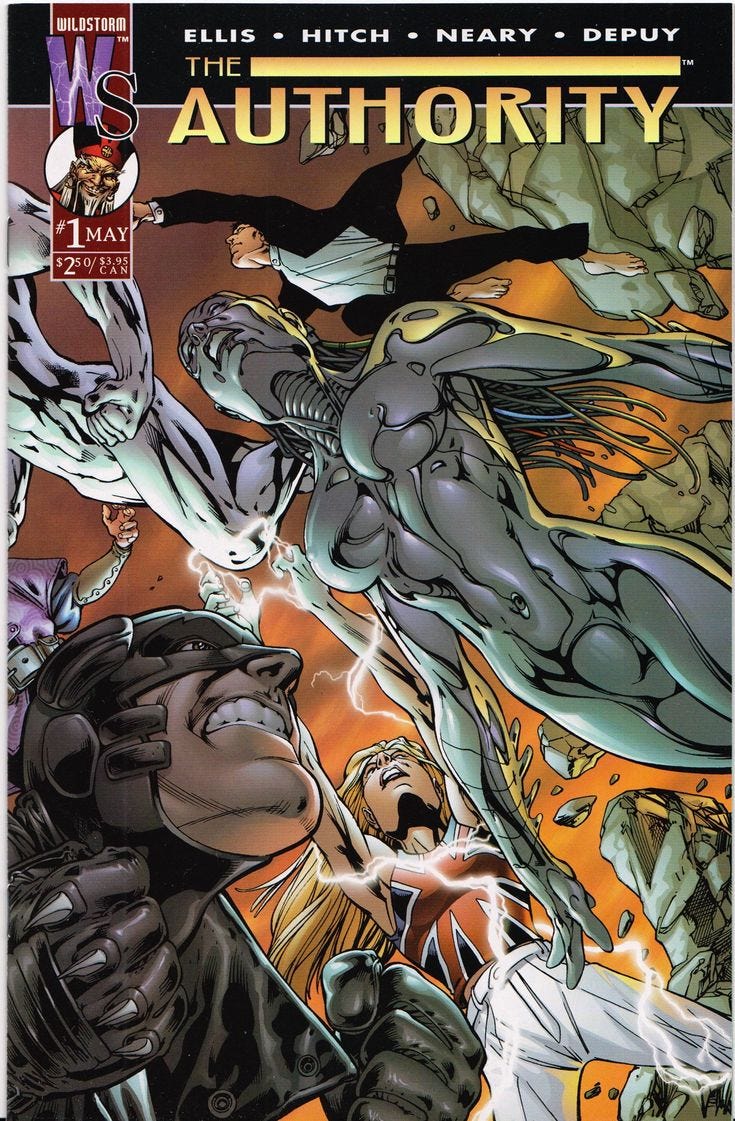
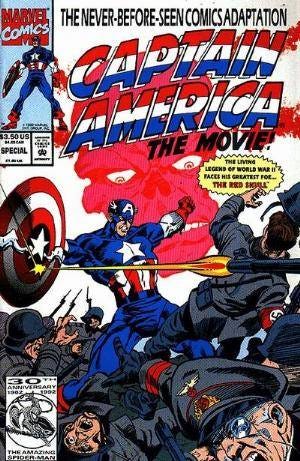
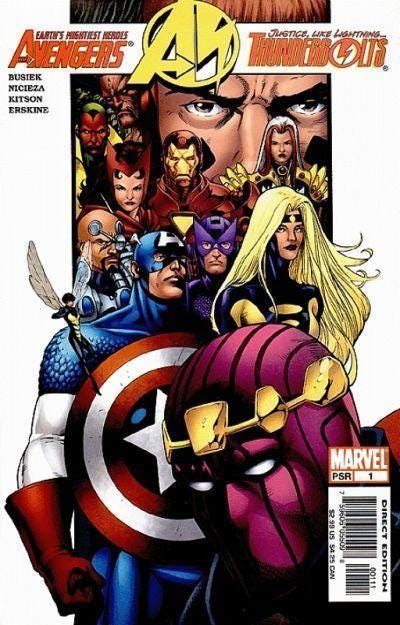
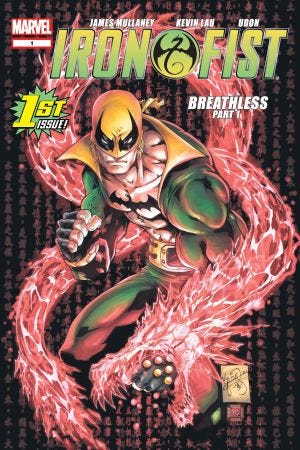
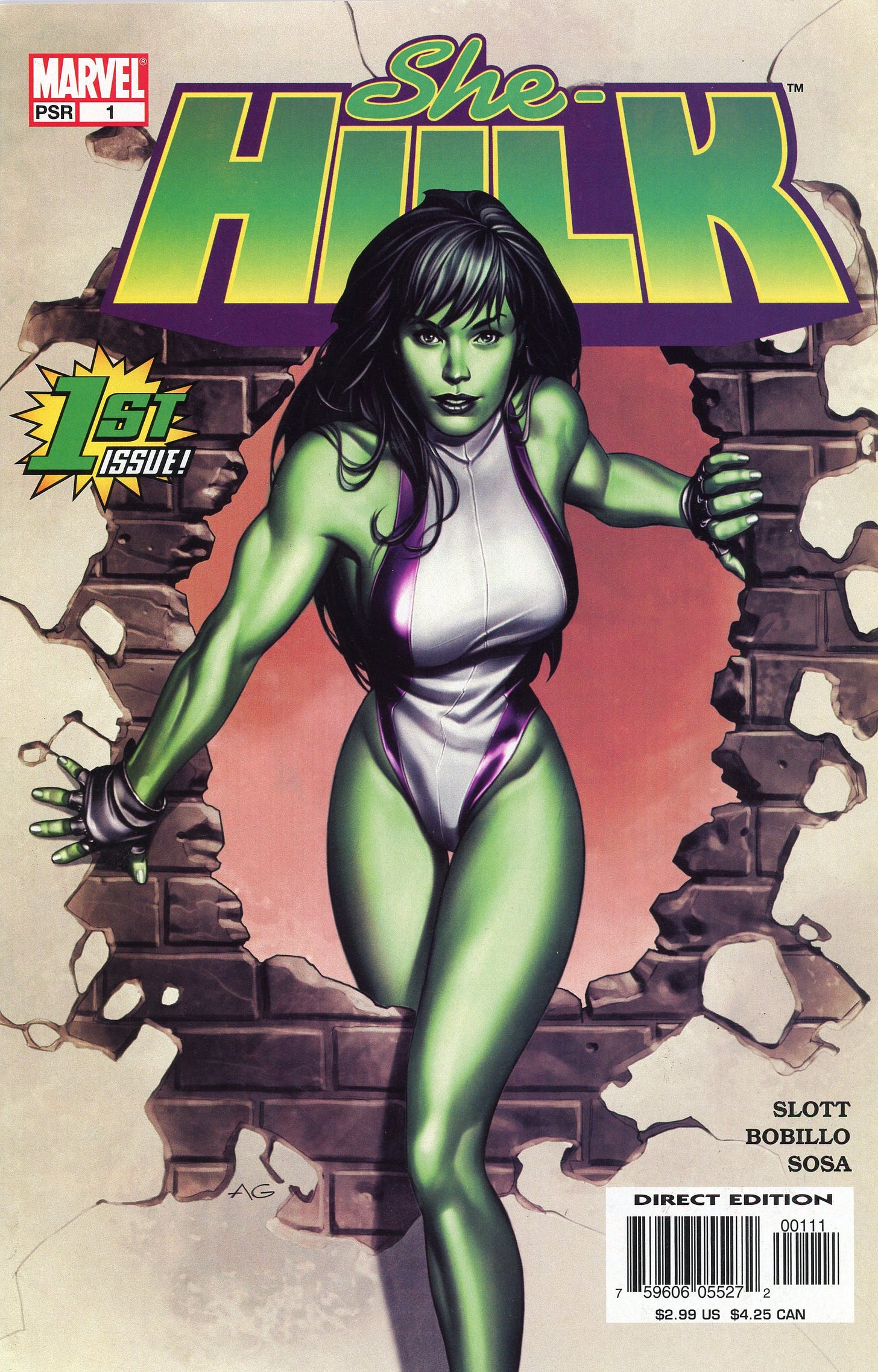
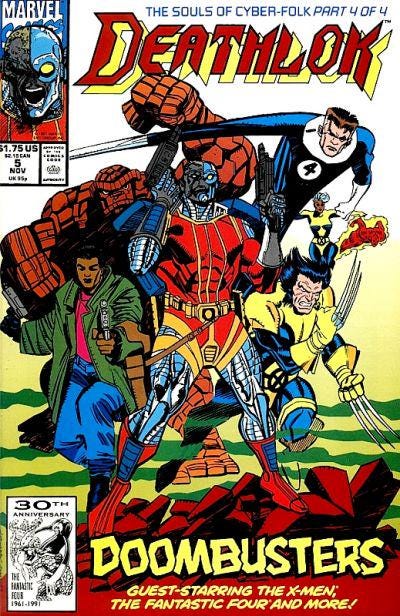
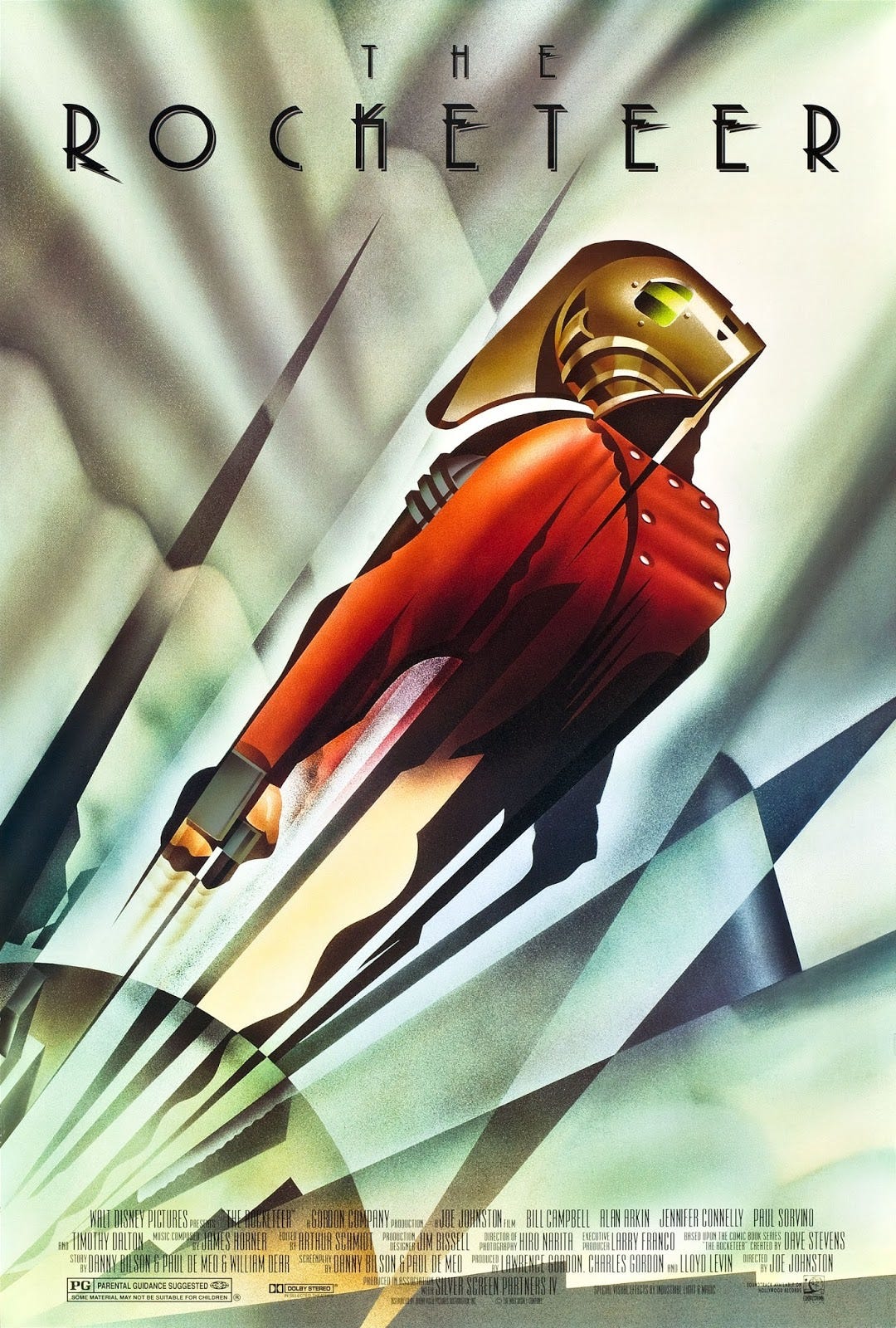
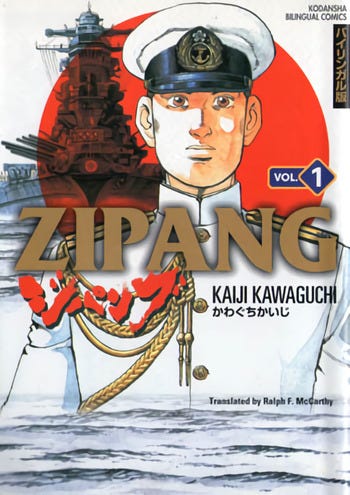
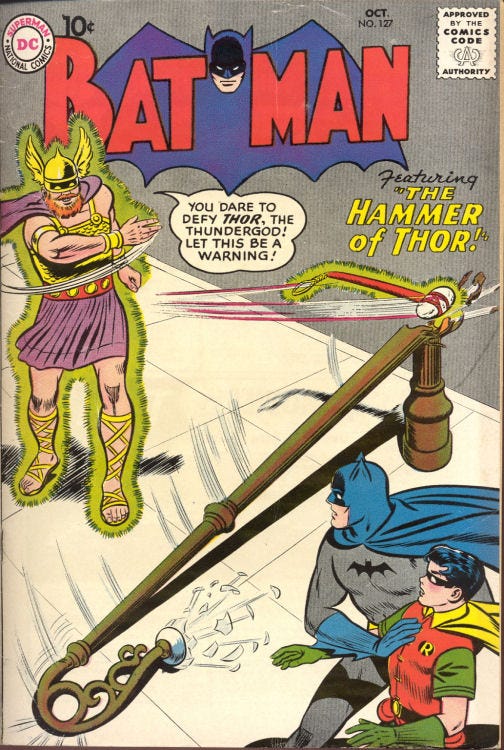
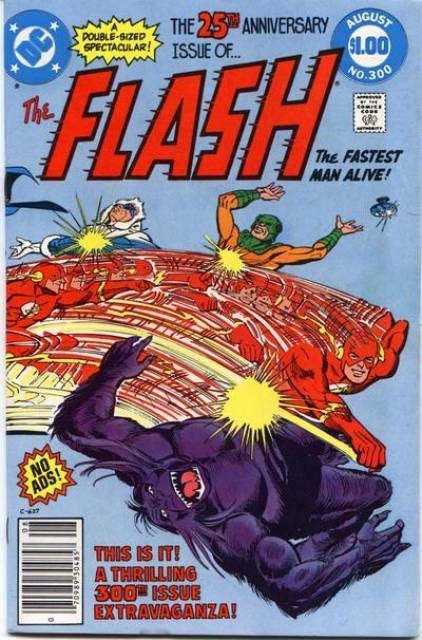
"But my memory of it is that those panels were the work of the infinitely-adaptable Stuart Immonen. In certain cases, Stuart may have been recreating panels or images from older Superman stories, but I believe they were all drawn by his hand here, rather than clipped and pasted. Let’s see what Kurt has to say once he arrives."
Yeah, they're all Stuart, mimicking the artists of the various eras. I can't say for sure he didn't reference a particular Curt Swan figure or something, but they're definitely not stats of any kind.
I wrote those panels to evoke a particular era and to hit the right thematic chord for that issue's story, and Stuart did an amazing job of capturing the right look for them, too. And on top of that, letterer Todd Klein, who knows more about the history of comic book lettering than any human alive or dead, knew who wold have lettered each of those panels, had they been actual historical Superman stories, so he mimicked the appropriate lettering of the time as well.
On the first page, as I recall, Todd added a caption to my script and may have changed the wording a little, too, to make it feel more like a Golden Age Superman panel. That's one of the reasons that series is so solid -- everyone working on it went above and beyond the usual requirements of the job to make it as good as they possibly could, and it shows.
I love Dan Slott's She-Hulk run. I remember that being such an unexpected delight when it first came out.